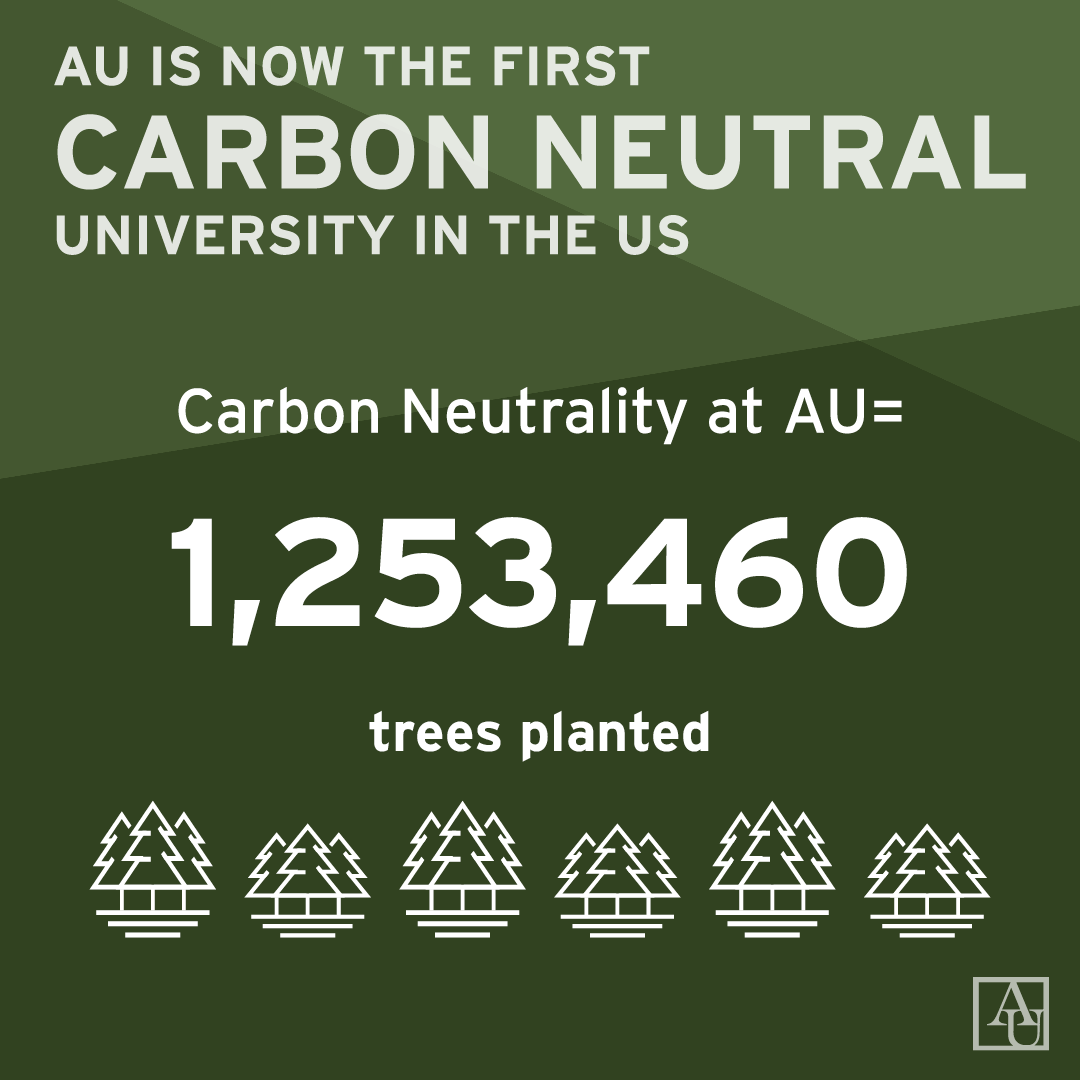
Contact Us
Spring Valley, Room 3rd Floor on a map
Office of Sustainability 4400 Massachusetts Avenue NW Washington, DC 20016-8163 United StatesAmerican University is Carbon Neutral
Through our innovative approach to reducing emissions, using green power, and purchasing strategic carbon offsets, American University achieved carbon neutrality two years ahead of schedule.
Reduce Our Use
Reducing greenhouse gas (GHG) emissions was the most important step AU took to achieve carbon neutrality. To maintain neutrality, AU has programs to engage the whole community in practicing sustainable habits.
Use Renewable Energy
Using emissions-free electricity drives down AU's carbon footprint and contributes to sustainable practices.
Offset the Rest
Some sources of GHG emissions cannot be completely eliminated with our current technology. Strategic offset initiatives allow AU to balance the GHG emissions our community produces from sources like air travel and commuting.